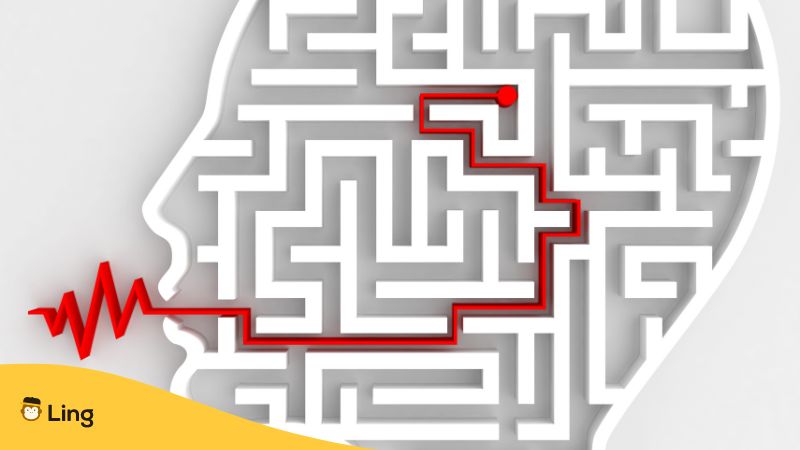From the moment we begin to speak our first words, language becomes an inseparable part of our cognition. It becomes clear at that very moment how language shapes thought. It’s all part of the human mechanism and what sets us apart from other beings – the ability to convey complex thoughts and concepts through the use of sounds, tones, and gestures. Through language, we are able to impart knowledge, emotions, and ideas across space and time, connecting people and cultures. Want to learn more about it? Read on below!
How Language Shapes Thought As A Cognitive Tool
Language is the medium we use to express our thoughts, share ideas, and communicate complex concepts. We may speak different languages, approximately 7,000 around the world, revealing the extraordinary flexibility of the human mind. Cognitive scientist Lera Boroditsky, in her exploration of how languages differ, demonstrates that language is more than just a means of communication; it is a powerful force that shapes how we think, perceive the world, and construct our reality.
Language, however, is not a monolithic entity. Languages vary, and different words evolve within different societies, resulting in a multitude of sounds, vocabularies, and structures. This is why many have begun wondering – Does the language we speak or our native language influence our thinking?

Understanding The Sapir-Whorf Hypothesis
The Sapir-Whorf hypothesis, proposed by linguists Edward Sapir and Benjamin Lee Whorf, suggests that language significantly shapes how we think and understand the world, which affects our daily lives. This hypothesis comes in two versions:
- The strong version claims that language fully dictates thought.
- The weak version argues that language influences thought to varying degrees.
These perspectives have prompted debates and studies into the extent of language’s role in our cognitive processes and mental lives and what it has to do with our own cognitive toolkit.
Boroditsky offers a glimpse into the small aboriginal community in Australia that speaks the language Kuuk Thaayorre. These people who speak the language use cardinal direction terms instead of the conventional “left” and “right” in speaking or writing directions. These directions orient every aspect of their lives and cognitive ability, including how they greet each other, describe events, spell number words, use masculine words, etc. Using a different cardinal direction sheds a unique perspective on how we speak shape our thoughts. It redefines our understanding of spatial orientation and demonstrates that languages shape cognitive abilities beyond what we previously believed possible.
Time, too, is molded by the language we use. Boroditsky’s research with Kuuk Thaayorre speakers shows that the language they use for spatial orientation also dictates their understanding of time. Their orientation in cardinal directions creates a conceptual map where time is tethered to the landscape rather than the body, altering their perception of time itself. This challenges the conventional notions of time and highlights how cross-linguistic differences can lead to different cognitive frameworks.

Explaining Linguistic Relativity And Determinism
The concepts of linguistic relativity and determinism arise from the Sapir-Whorf hypothesis. Linguistic relativity suggests that a language’s structure can influence how speakers see and understand the world. Linguistic determinism, on the other hand, claims that language plays a crucial role in our thoughts, how we speak properly, or how differently we use the same word. While evidence supports language’s influence on thought, the extent of linguistic determinism is still debated among scientists.
More About Linguistic Diversity
The linguistic diversity that blankets the world extends its influence to other cognitive meanings and visual perceptions. Boroditsky demonstrates how languages divide the color spectrum, revealing distinct ways of experiencing the visual world. This means that English speakers, Hebrew speakers, Japanese speakers, German and Spanish speakers interpret words differently. The list doesn’t end there, and the rule applies to other languages, such as Mandarin speakers, Arabic speakers, Turkish speakers, Greek speakers, and more.
Let’s pick the Russian language among the many world’s languages as an example. This language differentiates between light blue and dark blue with separate words, resulting in faster perceptual discrimination between these colors among Russian speakers.
Furthermore, language affects how we interpret events. Different languages encourage distinct descriptions of actions, affecting memory and perception. Speakers of languages without explicit agentive descriptions, like Spanish and Japanese, are less likely to remember the agents of accidental events. This phenomenon underscores the profound impact language has on constructing and recalling events.
Grammatical nuances also play a role in shaping thought. The assignment of gender to nouns in certain languages affects how speakers attribute traits to objects. For instance, grammatical gender can influence perceptions of beauty, strength, and elegance associated with various objects, as demonstrated through the analysis of language-related expressions.

Bilingualism And Its Effects On Cognitive Perception
The interaction between language and thought is a two-way street. While language influences cognition, cognitive processes can also shape the evolution of language. Bilingualism, for instance, demonstrates the malleability of thought when switching between languages.
Bilingualism, the ability to speak two languages, provides an interesting context for exploring the interaction between language and thought. Bilingual individuals navigate between different linguistic systems, influencing cognitive flexibility, attention control, and perception. The study of bilingualism sheds light on how language diversity can enhance cognitive abilities and reshape thought processes.
Neuroplasticity And The Interaction Of Language And Thought
Neuroplasticity, the brain’s remarkable adaptability, holds significant implications for the interplay between language and thought. Our brain’s capacity to reorganize allows it to adapt to and be shaped by linguistic experiences, impacting how we think, reason, and perceive the world around us.
Boroditsky’s exploration of how language shapes thought serves as a reminder that the beauty of our cognitive universe lies not in its uniformity but in the vast tapestry of 7,000 unique linguistic worlds that intricately define who we are. It urges us to embrace and preserve this diversity, encouraging us to question, learn, and evolve as we continue to unlock the boundless potential of the human mind.
Discover The Other Beautiful Aspects Of Language Through Ling
Now that you know how language shapes thought, it’s time to polish your skills and maybe learn a new language. This is now made easier with apps like Ling. It’s a language-learning app that helps you master foreign languages, including English, Bosnian, German, French, and a whole lot more. It’s available for download at the Play Store and App Store.































































